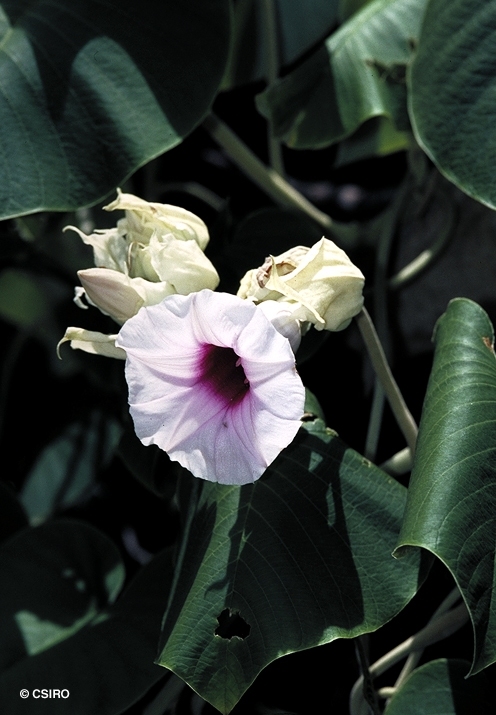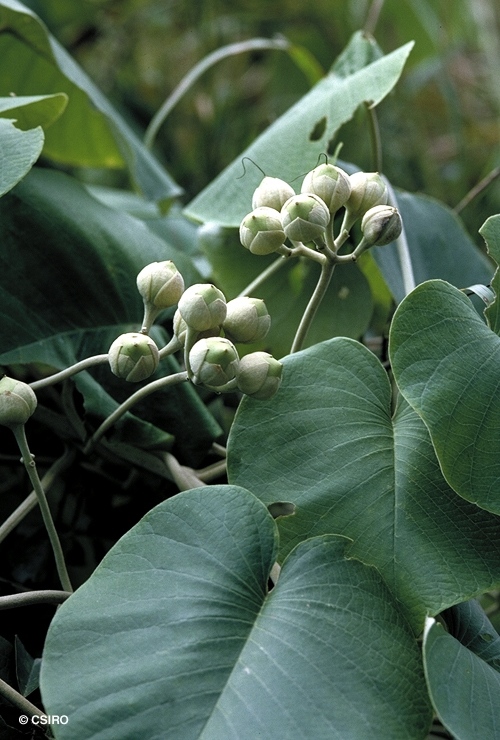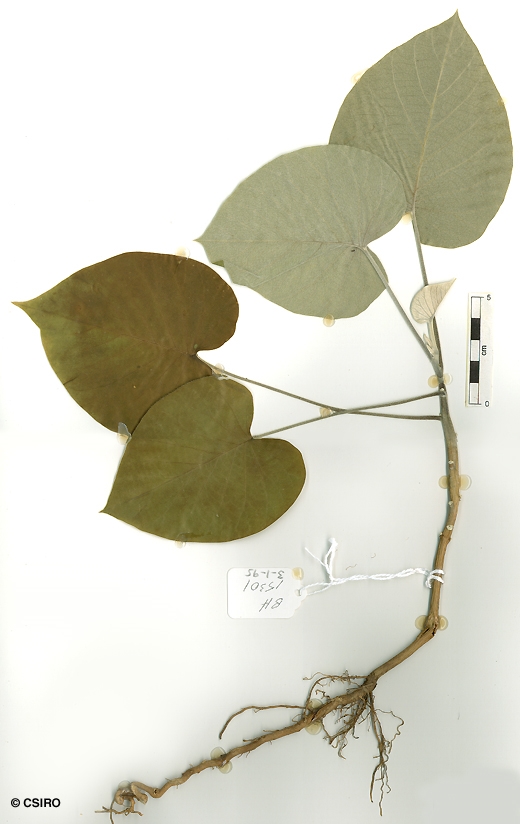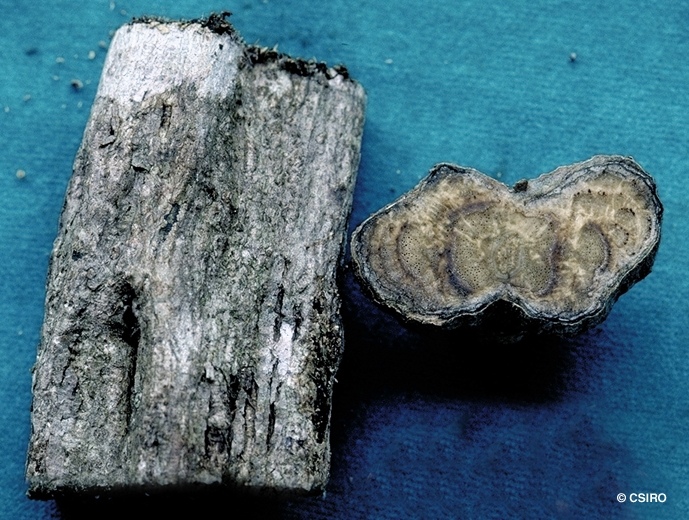Australian Tropical Rainforest Plants - Online edition
Argyreia nervosa (Burm.f.) Bojer







Bojer, W. (1837) Hort. Maurit. : 224.
Creeper, Elephant; Elephant Creeper; Silken cord; Woolly Morning Glory
Leaf blades about 12.5-21 x 11-19 cm, petioles about 6.5-11.5 cm long. Leaf blade underside appears white, silver or gold because of a dense covering of prostrate white hairs, upper surface glabrous. Twigs and petioles clothed in soft, silky, white, appressed hairs. No milky exudate from the twigs and petioles? Immature leaves folded in half with the upper surfaces of each half pressed together.
Inflorescence up to 25 cm long, clothed in velvety hairs. Peduncles about 20 cm long, pedicels about 1 cm long, both densely clothed in white hairs. Bracts present at the base of the pedicels, each bract about 4-6 x 2 cm, white or cream. Sepals about 15-17 x 10 mm clothed in white hairs, inner surface glabrous. Corolla pale, almost white on the outer surface, inner surface purple to pale pink. Corolla tube about 7-7.5 x 0.6 cm. Anthers about 6-8 mm long, staminal filaments about 15-27 mm long alternately longer and shorter. Pollen white, spinulose. Disk 5-lobed, cream-white, about 1.5 mm high, surrounding the base of the ovary. Ovary about 3-5 mm long. Style about 10-26 mm long. Stigma terminal, globular, +/- 2-lobed, about 2-4 mm diam., papillose
Infructescence quite large, sometimes up to 25 cm long, peduncles densely clothed in velvety hairs. Fruits globose, about 18-20 x 16 mm, apex apiculate, five sepals persistent at the base and partly enclosing the fruit. Each sepal about 14-18 mm diam. Seeds up to 4 per fruit. Each seed about 8-9 mm long, densely clothed in hairs. Hilum +/- orbicular, about 2 mm diam. Cotyledons crumpled and folded in a complex fashion with endosperm intrusions between the folds. Radicle about 3-5 mm long, shorter and narrower than the cotyledons.
Cotyledons bilobed, about 5.5 x 5.5 cm +/- palmately veined with all venation depressed on the upper surface. Cotyledonary midrib not extending to the apex. First leaves cordate, apex acuminate, base cordate, petioles about as long as the leaf blade. Lower surface of the leaf blade densely clothed in white matted hairs resembling cobwebs, upper surface clothed in erect, translucent hairs. At the tenth leaf stage: leaf blade cordate. Stems, petioles and the underside of the leaf blades densely clothed in +/- prostrate white silky hairs. Seed germination time 14 to 152 days.
An introduced species originally from India now naturalised in CYP, NEQ and CEQ. Altitudinal range from near sea level to 200 m. Usually grows on pasture land but also in monsoon forest and gallery forest.
This plant was probably introduced as an ornamental plant and has now become naturalised.
This species should be treated with caution. The seeds contain lysergic acid and have been used for their hallucinogens. This plant is probably poisonous in the broad sense and there may be various side effects associated with its use.





